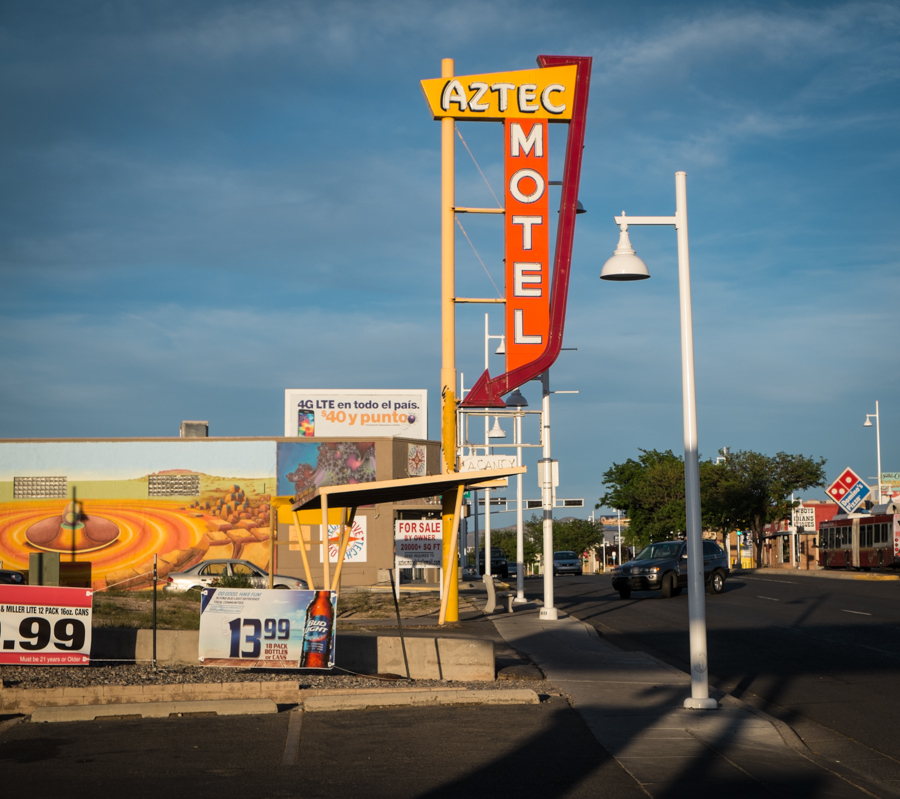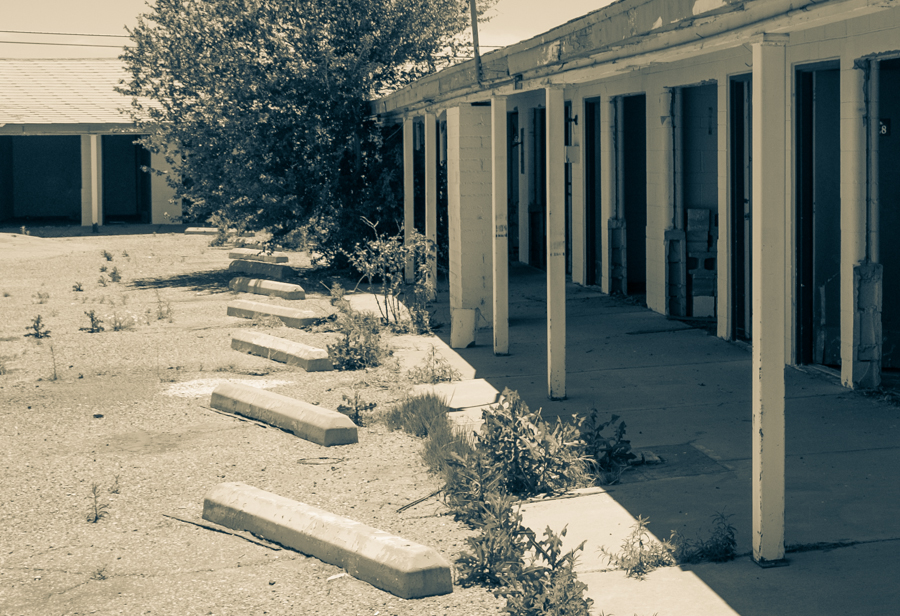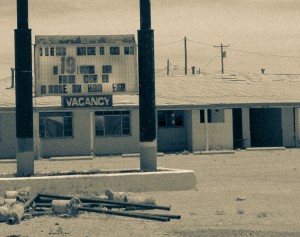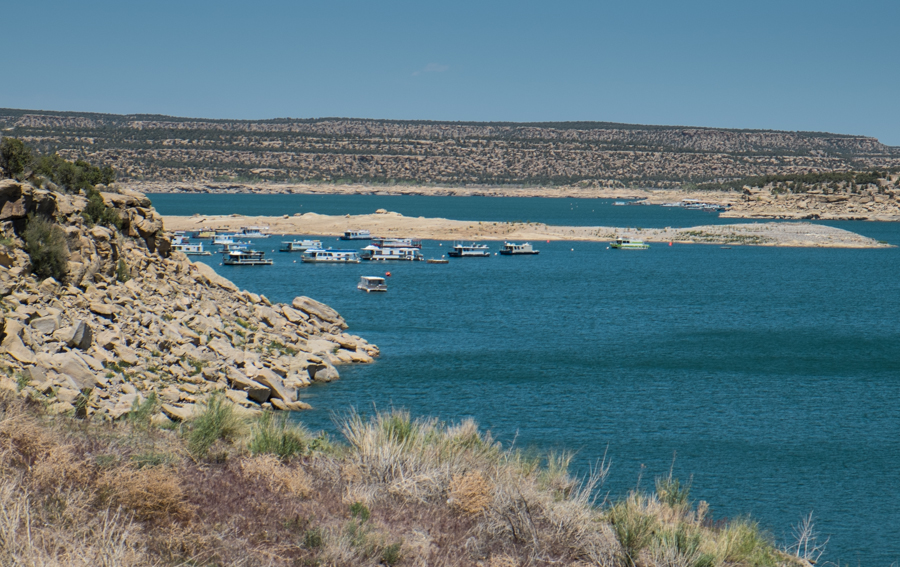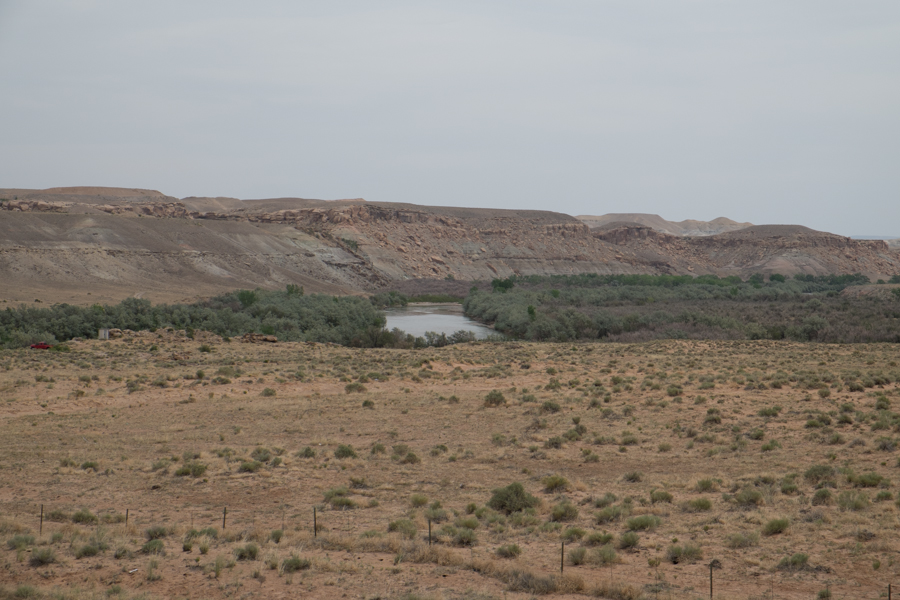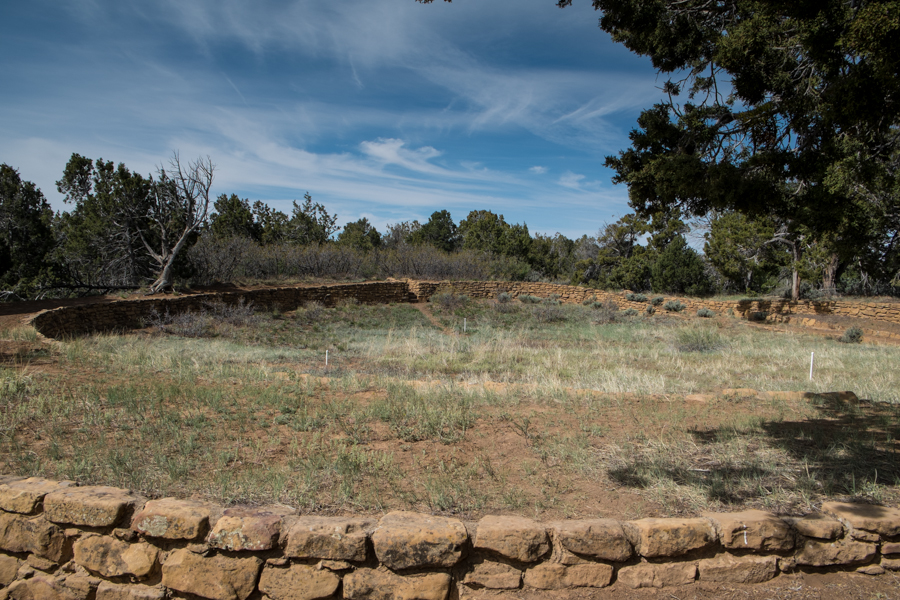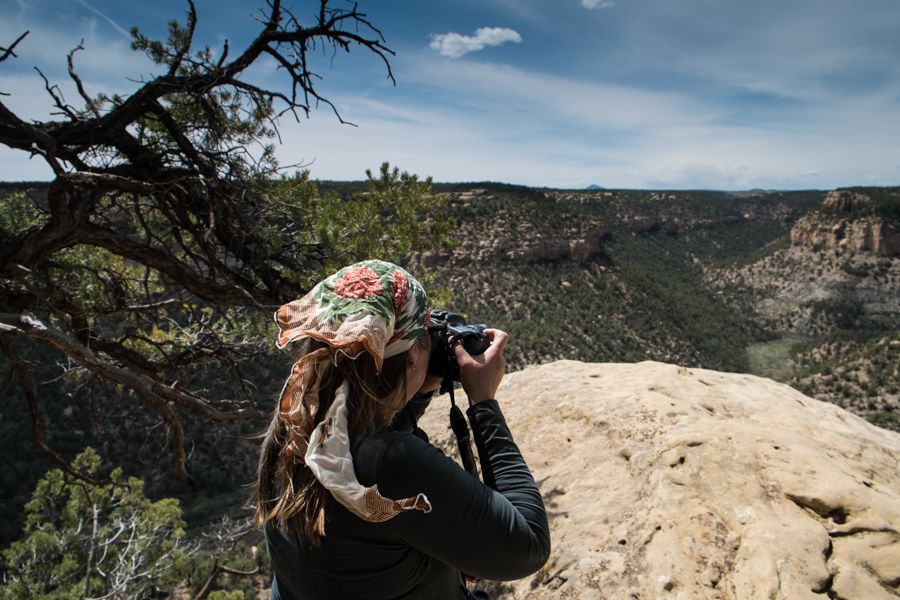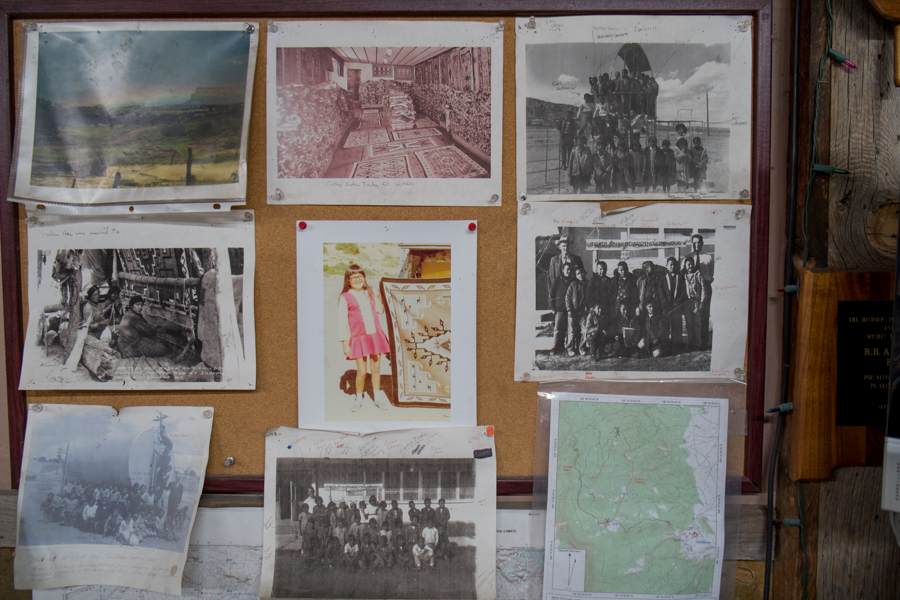
Delores Brown, center, holding one of her mother’s rugs in a picture taken a long time ago. From the bulletin board at the Toadlena Trading Post
tl;dr Lissa and I met a man today who saw Big Foot in the foothills of the Chuska Mountains on the Navajo Nation west of Newcomb, New Mexico. He could neither hear nor speak, but we have no reason to doubt his story. Lissa misplaced her purse, which was easily found, and we bought a Two Grey Hills rug. The ice cream man no longer delivers to Toadlena. These things are all connected.
TOADLENA – Of this much I am sure. Arthur J. Belone from Toadlena Mountain saw Big Foot on the piñon-juniper hillside behind the Toadlena Trading Post in the foothills of the Chuska Mountains on May 14, 2013. There were two inches of snow on the ground.
Because Arthur can neither hear nor speak, the details are murky, but we have no reason to doubt Arthur’s story. He gestured easily to his ears and mouth to make clear the communication challenge, but didn’t hesitate to initiate a conversation anyway. He pointed to his foot, raised it, and gestured with his hand to indicate the size of a much larger foot. Then he pointed to the hillside.
We were sitting on a low wall outside the Toadlena Trading Post, 12 miles off US 491 near Newcomb on the Navajo Nation in northwestern New Mexico. The trading post is one of those old stone buildings that in this part of the country sit at the intersection between traditional culture and the cash economy. Inside, in a warren of rug rooms, are gorgeous Two Grey Hills weavings.
Delores Brown, who was minding the store, said the ice cream man no longer delivers here, at the end of this long road. When we stopped by late in the afternoon to recover Lissa’s misplaced purse, we had just missed Delores’s mother and sister, who had been by a few minutes earlier to bring the ice cream. Her mother, Violet Brown, is a weaver of some renown, as was her grandmother, the late Yazzie Blackhorse. But I am getting ahead of myself.
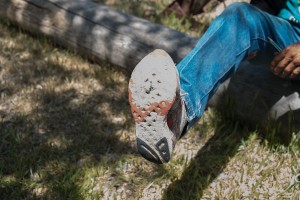
Arthur J. Belone’s are the shoes of a runner
Arthur had the lean build of a runner – Delores mentioned marathons – but he sadly pointed to his knee. He carried a Bic ballpoint, tucked into a glasses case clipped to the collar of his t-shirt from the 15th Annual Toadlena Challenge (8k and 2 mile). He used the pen when gestures fell short. “I can’t run any more,” he wrote in the margin of a copy of the Navajo Times Lissa had been carrying.
It was via that technique – his ballpoint or my mechanical pencil, and Lissa’s Navajo Times or my yellow Rite in the Rain notebook – that he clarified the Big Foot story – the date, the depth of snow. He also shared some family history that I won’t go into, and described either deer or elk coming down from the mountains, hopping the fence and eating crab apples from the orchard across the road. Delores described Arthur as being remarkably chatty for a man who can neither hear nor speak. I could not disagree.
It was only several hours later, when we had stopped at the Saturday flea market up the road in Shiprock, that Lissa realized she must have left her purse in one of the rug rooms where we had been sitting on the floor laying out rugs and dreaming. It wasn’t all that much bother, because we were just wandering, so we wandered back down US 491 to the turnoff north of Newcomb and headed back out the road to Toadlena. There had been sheep on the road earlier. We hoped to see them again.
Delores was happy to see us. She said she’d been uncomfortable poking through Lissa’s purse to figure out who it belonged to, found a phone number and left a message. It wouldn’t have helped. The cell phone was in the purse. And then Delores started telling stories – about the few grandmothers who still go up in the mountains in the summer with the sheep, about the time her mother tried to teach her to weave, about snakes and growing squash, about the ice cream problem and that it was too bad, we’d just missed meeting her mother.
Lissa asked if they had any of her mother’s weavings. Delores said yes. And so it was that we became the owners of a beautiful Violet Brown weaving.

Violet Brown weaving


